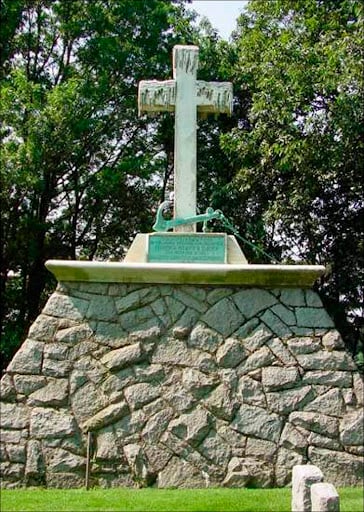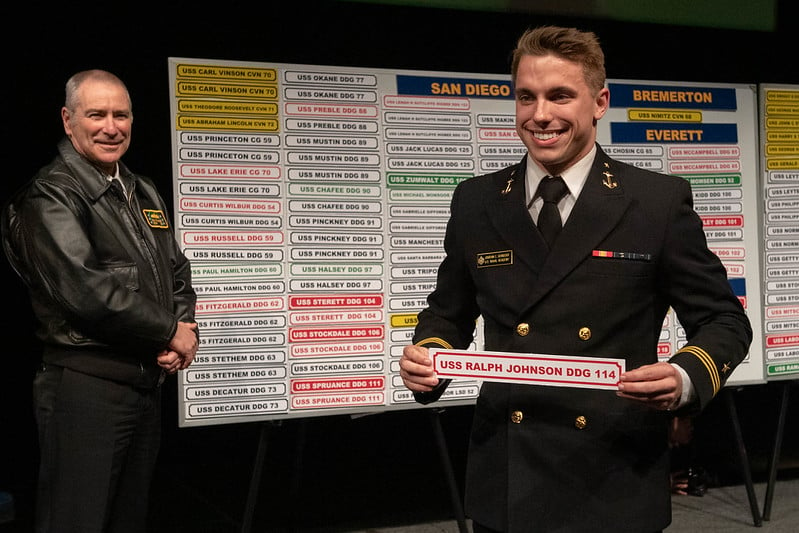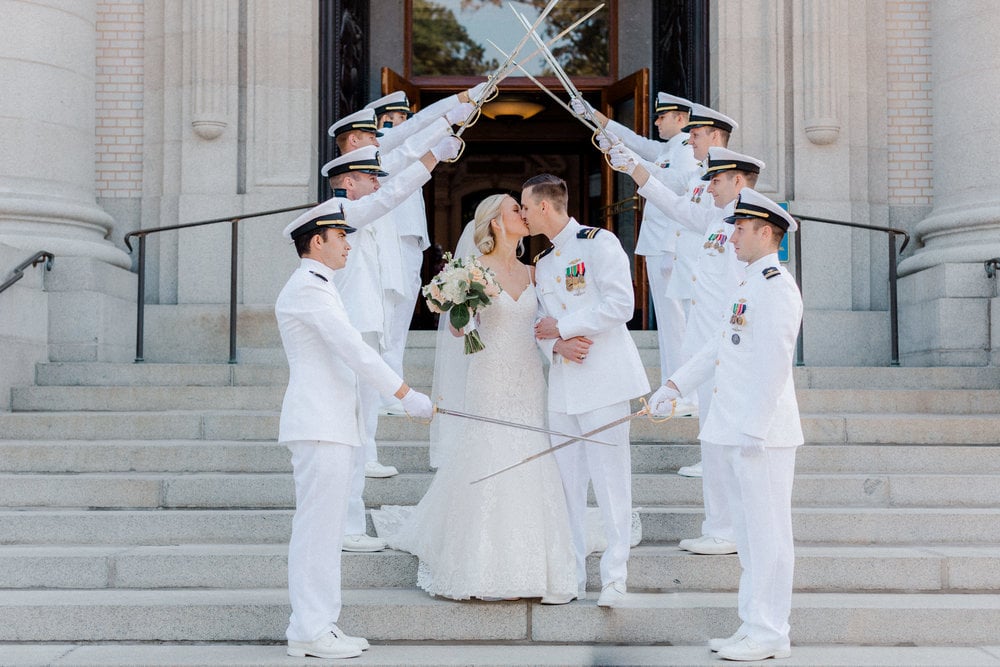Over its long and storied history, the Navy has been on the forefront of many significant explorations spanning the globe. Its polar expeditions to both the North and South Poles have been especially noteworthy and continue to captivate imaginations around the world, since these remote, uninhabitable areas were previously untouched and unexplored by modern man. That all changed with the Wilkes Expedition, the first exploring expedition by the Navy in 1839, which established the existence of a land mass in the South Pole area that could possibly be designated a continent. Soon after, the Navy helmed a number of dangerous and awe-inspiring explorations.
The USS Jeannette Heads to the North Pole
The largest monument in the USNA Cemetery pays tribute to one such harrowing trip. Launched in 1879, the Jeannette Expedition left San Francisco with a crew of 33 men in a privately owned merchant steamer called the USS Jeannette. It had been specially outfitted for ice pack navigation, and while bankrolled by New York publisher James Gordon Bennett, was actually operated by the U.S. Navy. USNA graduate Lieutenant Commander George Washington DeLong, Class of 1865, commanded the ship. Its mission? To reach the North Pole.
The crew of Navy officers, enlisted men and civilian specialists traveled up the Bering Strait and into the Arctic. They reached the ice in early September and ran into a frequent Arctic pitfall—their boat was soon trapped in ice. It drifted for about a year and a half, then ultimately succumbed to the ice and sank in June of 1881. Despite this hardship, however, the men were determined to persevere. DeLong led his crew on an arduous three month trip over the ice, dragging boats and sleds until they reached the open waters North of Siberia. There they split up into three boats, with 13 men headed by DeLong, eight total men on Executive Officer Charles W. Chipp’s boat and the remaining eleven on Engineer Officer George W. Melville’s boat.
Disaster!
Just a few days later, a violent storm pushed their boats apart. Chipp's boat was lost at sea and all men perished. However, Lieutenant Commander DeLong and Engineer Melville were able to navigate about 700 miles to the Lena Delta of Siberia. Melville reached land in the southern delta, and DeLong landed further north on September 17, 1881. Two men in DeLong’s party were able to find help and survived for a time. However, many in DeLong’s group, including DeLong, died of exposure and starvation in October or early November 1881.
Melville and his crew were fortunate to get aid from the Siberian natives they encountered, and then went on a search for DeLong’s party. In March 1882, they found the frozen bodies of DeLong and nine other men. They buried them under a rock pile called a cairn, placing a large cross on top. Melville also recovered the USS Jeannette’s log and other records, a valuable find in the frozen north. In the end, just 13 of the original 33 men made it home. While it was a tragic end to an immensely difficult journey, the fact this many men survived was nothing short of miraculous.
The Jeannette Expedition Monument Comes Alive
Melville’s crew made drawings of the sacred cairn. When they returned home, they brought these to the head of the USNA drawing department, Culvert Caresi, and in 1890, he designed the Jeannette Expedition Monument to be placed in the USNA Cemetery. It was a strong homage to the Arctic cairn first marking DeLong and his men’s resting spot. At 24 feet tall, the Jeannette Expedition Monument is a breathtaking sight. Its stone cross drips with stone icicles and a large stone and mortar base evokes the original cairn. Although there are no men buried here in the cemetery, the monument serves as an eternal reminder of the bravery and persistence of all 33 men in the Jeannette Expedition—and especially its leader DeLong.
Their Memories Live On
At USNA, we are grateful for the bravery of each of our graduates, and we honor the memory of DeLong and his crew with this beautiful monument in a bucolic setting across College Creek from the Yard. Come visit and explore all the Yard has to offer, from stunning historical monuments and stories to breath-taking architecture, to the careful preservation of 175+ years of naval history. The Naval Academy Business Services Division supports the Brigade of Midshipmen by donating our proceeds from our 20 business units that allow our mids to be successful, well rounded future leaders. We support a variety of extracurricular activities such as cultural arts, theater, music, club sports, and a variety of other activities. When you enjoy the dining, shopping and tours unique to USNA, you’re also giving back to the midshipmen who walk these walkways today. Come see what makes USNA so special, and experience history in the making every day.
-1.png)










